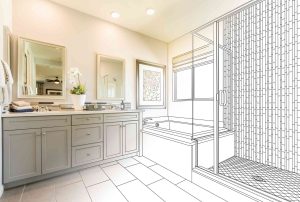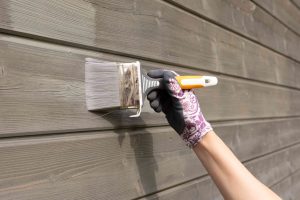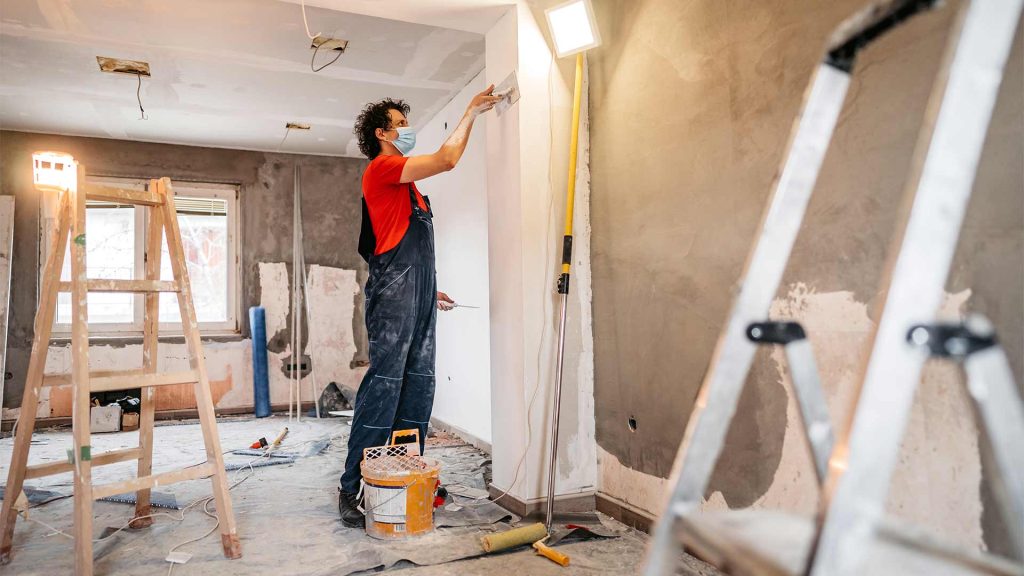Your guide to buying a fixer-upper home
Fixer-upper homes often look more attractive in a hot housing market. Their prices are typically lower and there may be less competition from other buyers.
Check your fixer-upper home loan options. Start here
In this guide, we share pointers to help you find, buy, and finance a fixer-upper property. If you’re ready to roll up your sleeves and invest some sweat equity, these fixer-upper loans will roll the cost of renovations into your mortgage loan and help you build your dream home.
In this article (Skip to…)
How do fixer-upper loans work?
In the past, you’d often need three separate loans to buy and repair a fixer-upper home. Those included:
Check your fixer-upper home loan options. Start here
- An initial mortgage to buy the home
- Another loan (often a personal loan) to fund the renovations
- A refinance when the work was completed to pay off the first two loans
Of course, having three separate loans is far from ideal. You’ll pay closing costs twice, at a minimum. Plus, personal loans can have lower budgets and higher rates for your renovation costs.
Luckily, lenders gradually recognized that borrowers needed something better. They developed all-in-one mortgages to buy and repair fixer-upper homes. With these rehabilitation loans, you borrow one lump sum that covers the purchase and renovation costs for your new home. You only have to apply for a single loan and pay one set of closing costs, making the whole process simpler and more affordable than in the past.
Today, there is a wide selection of these “fixer-upper home loans” to choose from.
Six types of fixer-upper loans
Fixer-upper loans are mortgage products that offer buyers enough money to cover both the purchase price of the home and the cost of renovations.
Check your home loan options. Start here
Many of these loans require special appraisals to establish the post-repair value of the home. And some may specify the need for an approved general contractor to complete the home improvements.
Below, we walk through the most popular types of fixer-upper loans, also called renovation loans. Please note that we’re focusing on the needs of first-time buyers who will live in the home they’re purchasing. If you’re planning to fix and flip the home, then an investment property loan may be better suited to your needs.
1. Fannie Mae Homestyle Renovation
The Fannie Mae Homestyle Renovation loan is a conventional mortgage that allows you to purchase a fixer-upper and pay for the cost of renovations with a single loan and mortgage payment. Moreover, you’re not required to purchase a primary residence (a home that you live in full-time). Rental and investment properties can also qualify.
To fund home improvements, the loan amount is based on the future value of the property when the work is completed. DIY enthusiasts can even do some of the work themselves, except for safety-critical tasks, which must be made by licensed professionals.
You’ll need a 3% down payment and a minimum 620 credit score. Home buyers with less than 20% down will be required to pay for private mortgage insurance (PMI) until their mortgage balance drops to 80% of their home’s market value.
2. Freddie Mac CHOICERenovation
The Freddie Mac CHOICERenovation loan is a conventional mortgage that is nearly identical to Fannie’s Homestyle. To qualify, you need at least a 3% down payment and a credit score of 620, depending on your mortgage lender.
The primary difference between the two fixer-upper loans is that the CHOICERenovation mortgage can be used to fund home resilience projects — think disaster proofing — while the HomeSyle cannot. Furthermore, work must be completed within 12 months of loan closing.
3. Freddie Mac CHOICEReno eXPress
Freddie Mac’s CHOICEReno eXPress is a streamlined version of the CHOICERenovation loan for when your rehab budget is smaller: up to 15% of the home’s purchase price. Eligibility requirements also include a 3% down payment and a 620 FICO score. But you must complete home improvements within 180 days of purchase, rather than 12 months.
4. FHA 203(k)
Backed by the Federal Housing Administration, the FHA 203(k) is a renovation loan that allows you to purchase a home and make needed upgrades — all with one tidy mortgage payment. It features a 3.5% down payment and a low minimum credit score requirement of 580.
This mortgage loan is designed to finance smaller home renovation projects, up to $35,000 in most places. So double-check the FHA loan limits in your area — you typically won’t have access to the higher loan amounts available through the Fannie and Freddie conventional mortgage programs.
Keep in mind that with FHA loans, you’re on the hook for mortgage insurance premiums (MIP) for the life of the loan. Although, you can cancel mortgage insurance if you refinance into a conventional loan down the road.
Additionally, all upgrades to the property must pass inspection by the Department of Housing and Urban Development (HUD) to ensure that your home meets government standards.
5. VA renovation loan
If you’re an eligible veteran or active-duty service member, the VA renovation loan is likely to be your best choice. Zero down payment, low mortgage rates, and no continuing mortgage insurance make this fixer-upper loan hard to beat.
A portion of the loan amount will fund the cost of renovations. However, you cannot borrow more than the repaired value of the home, which is established by a VA-approved contractor during the home appraisal process.
To qualify for a VA renovation loan, you’ll need to show proof of your VA entitlement with a certificate of eligibility (COE). You can only finance a primary residence; rental and investment properties are not eligible. And, while there’s no ongoing mortgage insurance, borrowers will need to pay the upfront VA funding fee, which can be rolled into the loan balance.
Lastly, while the VA doesn’t set minimum credit score requirements, mortgage lenders are allowed to establish their own eligibility guidelines. Many want to see a credit score of 620 or higher for a VA loan, though requirements could vary for a VA renovation loan.
6. USDA renovation loan
The USDA renovation loan is a financing option for buyers who want to purchase a single-family home in a location that has been designated a “rural area” by the U.S. Department of Agriculture. Fortunately, the definition is broader than many think — an estimated 97% of the U.S. qualifies. Use the USDA’s property eligibility tool to see which areas in your state are considered rural.
For those who are eligible, the USDA renovation loan requires no down payment and funds home improvement projects, upgrades to accommodate family members with disabilities, and installation of energy-efficient features.
Still, you’ll need to meet household income limits, so check your area median income (AMI) here. In addition, this type of loan cannot be used to finance investment properties — only primary residences are allowed.
Other financing options for a fixer-upper home
One alternative if you’re relying on sweat equity is to use a personal loan to fund your rehab project and then refinance that using a home equity loan (HEL) or home equity line of credit (HELOC), both of which are second mortgages.
Check your fixer-upper home loan options. Start here
This strategy has pros and cons.
- Pro: Home equity products tend to have much lower interest rates than personal loans
- Con: Home equity loans tend to have higher closing costs, although a few banks may offer HELOCs with no closing costs at all
“If you can get enough cash this way, it tends to be the simplest way to finance repairs,” says Jon Meyer, The Mortgage Reports loan expert and licensed MLO. “But you need to ensure you can get enough cash for the projects.”
As with all mortgages and loans, be sure to shop around between multiple lenders and compare quotes to identify the best overall deal.
Whether you can qualify for a HEL or HELOC will depend on how much value your rehab project has added to your home. Many lenders want the combined balances on your main mortgage and second mortgage to be no more than 80% of your home’s market value. And they’ll get an appraiser to check.
But some lenders allow you to borrow up to 85% or even 90% of the market value. So, search out one of those if this is an issue for you.
How to find fixer-upper homes
To find a fixer-upper home, you’ll mostly use the same process as finding any other home. Start with the Multiple Listing Service (MLS) website, real estate apps, and, of course, your local real estate agent or Realtor.
Check your home loan options. Start here
However, there are five tips to buying a fixer-upper home that may help you move more quickly:
- Get preapproved for your mortgage. You’ll be taken much more seriously by agents and sellers once your financing is lined up
- When choosing a buyer’s agent, pick one that specializes in fixer-upper homes. You want one who’s known within the local real estate community as a fixer-upper specialist because they may be told about opportunities earlier than others
- Keep a close eye on distressed properties. These are often foreclosures and short sales and you may have to seek out their listings. But they can make great fixer-uppers
- Find local property auctioneers and register for alerts
- When searching mainstream listing websites use “fixer-upper” as a keyword
If you’re considering foreclosed homes,” Meyer notes, “be sure to do your due diligence on things like overdue tax bills you’d have to take care of.”
How to buy a fixer-upper home
The process of buying a fixer-upper is similar to purchasing any other home that’s move-in ready. Be sure to let your real estate agents know you’re looking for one so they can call you when new options hit the market.
Connect with a lender to start your preapproval. Start here
Especially with fixer-uppers, you need to do your due diligence before you commit yourself. Any home can have expensive structural issues, but fixer-upper homes tend to have more. So, unless you’re an expert yourself, you need to get in a professional to warn you of defects that could blow your budget out of the water.
Get prepared with an inspection and preapproval
Doing your “due diligence” means not skipping the home inspection — even though it can be tempting to waive an inspection when you’re in a bidding war.
In addition, before you begin to look at properties, get your financing lined up. If you plan to use a fixer-upper home loan, you’ll need to have a contractor estimate the scope and cost of repairs before you can get approved.
Real estate agents and sellers won’t take you seriously unless you can prove you’re qualified for financing. That means having a valid mortgage preapproval letter in your pocket.
Set a realistic budget for renovations
When evaluating loan programs, it’s vital to match the home price and rehab costs to your budget. If you’re not flipping for a living, it’s easy to let your heart rule your head and make optimistic assumptions about how much your renovation project will cost — and the value it will add.
Keep in mind that your home improvement budget can change as you work on the home. “Therefore, it is often advised to get a HELOC and make as many withdrawals as needed,” says Meyer.
So pretend you’re a professional flipper, even if you’re not. Build spreadsheets and itemize what you’ll spend on each improvement and each part of each upgrade.
The more detailed your budget, the easier it is to recognize overspends early — and to adjust other elements so you stay on track. For example, if you decide marble countertops in the kitchen are necessities, you must downgrade other amenities to balance out the cost.
Pros and cons of buying a fixer-upper home
Fixer-upper homes might seem especially attractive in this housing market, where prices on many homes have risen at an astronomical pace. And, for the right person, buying a fixer-upper as a starter home can be a great option. But it’s not for everyone. There are some real pitfalls to be aware of.
Check your fixer-upper home loan options. Start here
Here are the main pros and cons of buying a fixer-upper home.
Pros of buying a fixer-upper
You probably already know the major advantages of buying a fixer-upper home:
- The renovated home you end up with could cost you many thousands of dollars less than it would have if you’d bought it in that state
- Most home hunters run a mile from an unattractive home. So you’re competing with a smaller pool of wannabe buyers. And in the current sellers’ market that could make the difference between your becoming a homeowner or remaining a renter
- The sooner you buy and can lock your rate, the sooner you’re protected from rising mortgage rates. Those were a real issue when this was written and may well still be when you’re reading it
- You get to choose the décor, layout and fixtures, fittings and appliances of your next home. You’re not inheriting someone else’s taste
That’s quite a list of serious pros. But don’t forget the drawbacks.
Cons of buying a fixer-upper
The biggest drawbacks to buying a fixer-upper are the risks. One is the possibility of your budget running away with you. But the main one is that you could buy a place with hidden defects.
Suppose you miss sinkage under the foundations or the fact the roof needs replacing or areas of hidden termite damage. You could find yourself with an unsellable property with repair costs that could run to tens of thousands of dollars more than you budgeted.
With an older home, you can’t eliminate those risks altogether. But you can minimize them by having a professional home inspector, a reputable contractor and, if necessary, a licensed pest controller take a good hard look before you commit.
Can I repair a fixer-upper myself?
Naturally, your renovation project will be more financially attractive the more work you can do yourself. Because labor costs can be high. But the amount and types of work you can do yourself may be limited by your mortgage program.
Check your fixer-upper home loan options. Start here
Most fixer-upper loans require you to be a licensed contractor if you plan to do any of the work yourself. And they may cap the amount of work you can do regardless. So if you’re relying on “sweat equity” (your own labor) to make the project viable, be sure to review your loan program’s DIY rules first.
In any event, all work will be inspected by and must meet high standards.
Finally, don’t scrimp when you need expertise. You’ll likely need a construction expert and a home inspector to make sure you’re not buying a money pit. If you’re flipping, you should have a friendly real estate agent check your numbers. Later, you should have specialists install — or check your installation of — electrical wiring and plumbing to make sure everything’s up to code.
Find your best fixer-upper loan option
So, where should you begin? The first thing to do is to decide on the type of mortgage you want. For many first-time home buyers purchasing a fixer-upper, an all-in-one rehabilitation loan is a great option.
Once you’ve settled on the loan you want, get preapproved. Preapproval letters are only valid for a limited period (often 30-90 days), but you can renew them as often as necessary. Always keep yours up to date while house hunting.
Now, with your letter in your pocket, you can start having fun. Start searching and viewing fixer-upper homes. Try to find a buyer’s agent who specializes in those.
Ready to go? Let us help you find lenders who can help you.
Time to make a move? Let us find the right mortgage for you
Read the full article here














